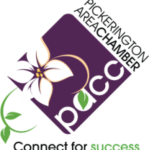
The significant extent of antibiotic usage in the United States makes it imperative for everyone to be vigilant about antibiotic side effects. Antibiotics have become the most commonly prescribed drug class globally, with sales reaching $40 billion as of April 2018. Between 2000 and 2015, there was a nearly 40 percent increase in human antibiotic consumption. Alarming projections suggest that if nothing changes, antibiotic resistance could lead to 10 million deaths worldwide by 2050.
With the rising threat of antibiotic resistance, these drugs are causing additional health issues both in the U.S. and worldwide. A recent article titled “Deadly ‘Nightmare Bacteria’ Resistant to Antibiotics Infected 221 Americans in 2017, CDC Says” is just one example of the frightening antibiotic side effects that have been reported.
Now, I will elaborate on both the short-term and long-term side effects of antibiotics…
What Is an Antibiotic?
An antibiotic is a medication employed to combat bacterial infections. Initially, antibiotics were derived from natural sources, originating from microorganisms with the ability to hinder the growth of other microorganisms. An excellent illustration of this is penicillin, which was discovered in 1926. This fungus-produced antibiotic effectively inhibited specific harmful bacteria. Presently, the market offers a wide array of antibiotics, and many of them are synthetic or artificially created.
Curious about the top 10 antibiotics and their applications? Here are some of the most frequently used generic antibiotics:
- Amoxicillin
- Doxycycline
- Cephalexin
- Ciprofloxacin
- Clindamycin
- Metronidazole
- Azithromycin
- Sulfamethoxazole/trimethoprim
- Amoxicillin/clavulanate
- Levofloxacin
Antibiotics find common usage in treating various conditions such as acne, bronchitis, conjunctivitis (pink eye), ear infections, sexually transmitted diseases, skin infections, strep throat, traveler’s diarrhea, upper respiratory tract infections, and urinary tract infections.
It is crucial to understand that antibiotics are ineffective against viral infections and should never be used for such cases. Unfortunately, people often misuse antibiotics for viral infections like the common cold or influenza. Some may even opt for antibiotics when dealing with a throat infection, which is not recommended unless it is a bacterial throat infection like strep. The CDC emphasizes that most sore throats resolve on their own without the need for antibiotics.
Patients prematurely stopping their antibiotic course due to side effects is a widespread issue. Doctors frequently warn against this practice as it may leave bacteria behind, making them stronger or resistant to future treatments. The World Health Organization suggests that evidence is emerging that shorter antibiotic courses could be just as effective for certain infections. Shorter treatments are more likely to be completed correctly, have fewer side effects, and are also more cost-effective. Additionally, they reduce bacterial exposure to antibiotics, slowing down the development of resistance.
Now, whether antibiotics are used inappropriately (for viral infections) or appropriately (for bacterial infections), let’s explore some of the numerous potential side effects associated with antibiotic use.
8 Potential Side Effects of Antibiotics
What are the effects of antibiotics on the body? Below are just a few examples of the numerous potential adverse side effects that antibiotics can have on the body:
1. Bodily Infections Resistant to Antibiotics
Every year, a staggering number of over 23,000 Americans lose their lives due to bacterial infections that have developed resistance to antibiotics. The CDC is raising concerns about the spread of resistant “nightmare bacteria” across the nation.
One of the most significant and widespread concerns regarding antibiotic usage is the emergence of infections that no longer respond to these medications. Several factors contribute to this problem, including the misuse and overuse of antibiotics. Another significant factor is the presence of antibiotics in the food we consume, especially in conventionally produced meat, dairy, and the prevalent use of antibiotics in fast food establishments.
The CDC highlights that antibiotic resistance is among the most urgent and critical public health challenges globally. The loss of effectiveness in antibiotics can turn once easily treatable illnesses into dangerous infections, causing prolonged suffering for both children and adults. Furthermore, antibiotic-resistant bacteria can spread among family members, schoolmates, co-workers, and potentially threaten entire communities.
Dr. Katherine Fleming-Dutra, deputy director of the Office of Antibiotic Stewardship at the U.S. Centers for Disease Control and Prevention in Atlanta, emphasizes that the use of antibiotics, no matter the context, carries the risk of side effects and contributes to the development of antibiotic resistance.
2. Infections Taking Longer to Cure
The use of antibiotics is leading to prolonged healing periods for infections that were previously easily treatable with these medications. Bacterial infections like urinary tract infections (UTIs) and pneumonia are now becoming significantly more challenging to manage. In particular, the commonly used antibiotics for UTIs are now considered ineffective in over 50 percent of patients in many regions worldwide.
The Council on Foreign Affairs states that antibiotics are currently facing a critical crisis, despite being introduced less than a century ago. These drugs, essential in fighting bacterial infections, are losing their effectiveness due to their widespread and excessive use in both humans and animals. It is evident that over time, antibiotics are becoming less reliable in their effectiveness, presenting a growing concern for the future.
3. Allergies and Asthma
Recent research has revealed a correlation between antibiotic use and the emergence of allergies. A comprehensive study, published on April 2, 2018, examined the health records of more than 792,000 children born between 2001 and 2013. The study found a significant link between babies who were administered antibiotics (or antacids) during the first six months of their life and the subsequent development of allergies, including asthma.
The lead author of the study, Dr. Edward Mitre, reported that exposure to antibiotics during infancy seemed to double the risk of asthma in children and also led to a 50 percent increase in the risk of allergies to substances such as dust, dander, and pollen (allergic rhinitis), eye allergies (allergic conjunctivitis), and anaphylaxis. This study highlights the potential long-term effects of early antibiotic use on allergic outcomes in children.
4. Diarrhea
Diarrhea, an unpleasant but frequently encountered consequence of antibiotic intake, can give rise to additional issues like dehydration and disruptions in electrolyte levels. Even after discontinuing antibiotic use, diarrhea may persist for several weeks. Both children and adults commonly experience this side effect when taking antibiotics.
5. Exhaustion
Among the various side effects of antibiotics, tiredness stands as a prominent possibility. It is quite unfortunate that while being unwell and potentially fatigued, taking antibiotics might exacerbate the feeling of exhaustion. This has been a known side effect of antibiotics for many decades. People taking antibiotics may experience tiredness or even extreme fatigue during their course of treatment.
6. Swollen, Black or “Hairy” Tongue
Amoxicillin, a penicillin-type antibiotic, comes with several side effects, among which a peculiar swollen, black, or “hairy” tongue is one of them. However, this is not a joke; it’s a genuine side effect. The common side effects of amoxicillin encompass:
1. Nausea
2. Vomiting
3. Diarrhea
4. Stomach pain
5. Vaginal itching or discharge
6. Headache
7. Rash
8. Swollen, black, or “hairy” tongue
But that’s not all; there are more serious side effects to be aware of, including:
1. Colitis caused by an overgrowth of Clostridium spp bacteria in the intestines
2. Jaundice
3. Seizures
4. Hives
It is essential to be aware of these potential side effects when using amoxicillin.
7. Messed Up Menstrual Cycle
The impact of antibiotics on the menstrual cycle has been a subject of debate, with research dating back to 1947 when a study explored the effects of penicillin on menstruation.
Interestingly, while some women do not experience any disruption in their cycle when taking antibiotics, others do. This discrepancy may be attributed to the fact that both antibiotics and hormones are processed by the liver, implying that antibiotics could potentially influence the metabolism of estrogen and progesterone in women. Such interference with hormone balance could lead to irregularities in the menstrual cycle.
On the other hand, alternative theories propose that it might not be the antibiotics themselves but rather the physical and emotional stress of being ill that could cause a delay in menstruation. In summary, the relationship between antibiotics and menstrual cycles is complex and may vary from woman to woman.
8. Hallucinations, Psychotic Reactions and Tendon Ruptures
Recently, a class of antibiotics called fluoroquinolones have been making headlines as experts expect that they can damage mitochondria and cause irreversible nerve damage. Researchers are now trying to figure out why.
Fluoroquinolones have been associated with troubling side effects including depression, brain fog and even hallucinations and psychotic reactions. Around 10 years ago, the FDA even required makers of fluoroquinolone antibiotics to add a “black box” warning to the drugs to warn both prescribing doctors as well as patients of the increased risk for tendonitis and even tendon rupture as potential side effects of these antibiotics!
How long do the side effects of antibiotics last? It depends on the antibiotic, the specific side effects of that antibiotic and the individual, but side effects of antibiotics have been known to last for several weeks. For example, with mild cases of diarrhea due to antibiotic use, diarrhea can continue for as long as two weeks after you finish taking an antibiotic. In more severe cases, side effects of antibiotics can go on for several weeks.
Alternatives to Antibiotics
There are thankfully a lot of incredible natural remedies that have been shown by research to be close to or even as powerful as antibiotics without the unwanted side effects of antibiotics! If we’re going to stop antibiotic-resistance superbugs then it’s important to consider natural antibiotic alternatives that can be used to obtain an effective yet safer outcome. Unlike antibiotics, these natural options are not known for creating superbugs.
For starters, there is raw garlic, garlic oil, and garlic supplements. Garlic is known to have potent antibacterial, antiviral, antifungal and antiprotozoal abilities. Garlic oil is one of my favorite natural remedies for an ear infection.
Oregano oil is another incredible natural alternative to antibiotics. Oregano (Origanum vulgare) is an herb you may already love it for its culinary use, but it also has a long history of fighting infections. Oregano oil contains powerful compounds like carvacrol and thymol which have been shown in scientific studies to have strong anti-bacterial and antimicrobial properties. Oregano oil is by far one of my favorite natural alternatives to antibiotics.
Another incredible alternative to antibiotics is colloidal silver. In vitro, research conducted in 2017 demonstrates how naturally synthesized colloidal silver nanoparticles display impressive antibacterial and anti-fungal activity. Colloidal silver is often recommended as an alternative therapy for a sinus infection or a cold, two health situations where antibiotics are often misused since a cold is always caused by a virus and as sinus infection is most often caused by a virus as well.
There are also more antibacterial foods you can eat in addition to garlic and oregano. Some of my favorites that I consume on a regular basis include Manuka honey, onions, mushrooms, and turmeric.
Final Thoughts
- Overuse and misuse of antibiotics is creating dangerous antibiotic resistance bacteria known as superbugs.
- Antibiotics are only effective (but now, not always!) against bacterial infections, not viral infections.
- There are so many side effects of antibiotics that we know about and as research continues, we’re learning even more such as the link between childhood antibiotic use and the development of allergies and asthma.
- Many people take antibiotics and don’t realize the extent of possible bizarre and outright scary side effects which is why education on possible side effects should be a must before taking an antibiotic or giving an antibiotic to your child.
- There are natural remedies like oregano oil, garlic, and colloidal silver that have been shown to have potent antibiotic-like abilities.






